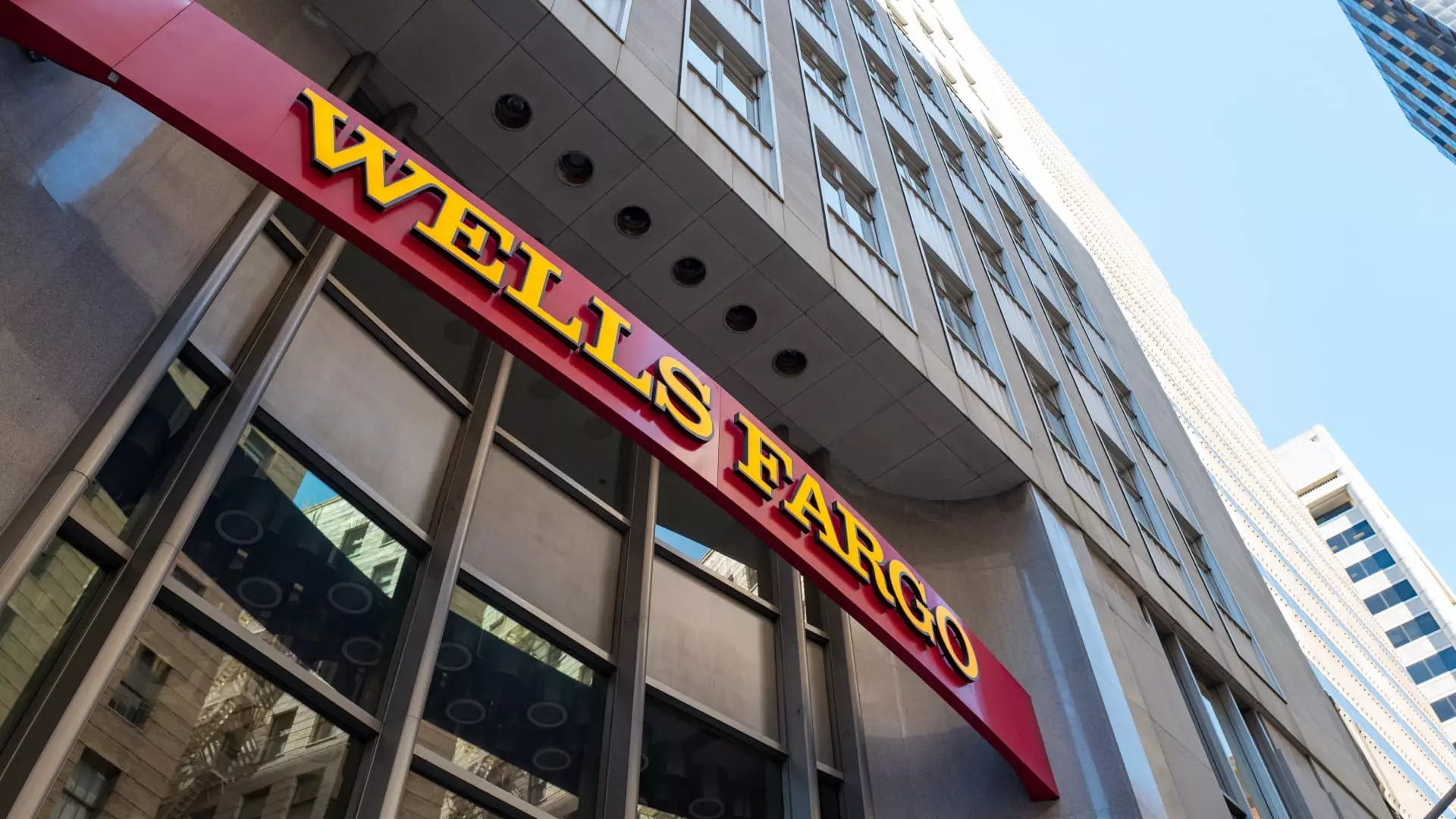Wells Fargo’s stock witnessed a notable surge on Wednesday following the bank’s announcement of earnings for the fourth quarter that surpassed analyst forecasts. Although the revenue reported for the period ending December 31 slightly declined by 0.5% year-over-year—totaling $20.38 billion and falling short of expectations by a small margin—it was the outlook for 2025 that captured investors’ attention. This discrepancy between missing revenue expectations yet exceeding earnings per share (EPS) figures highlights a critical aspect of Wells Fargo’s current trajectory and investor sentiment.
The adjusted earnings per share came in significantly higher at $1.58, well above the consensus estimate of $1.35. However, it’s important to note that these figures were adjusted in part due to a one-time severance expense exclusion. This juxtaposition illustrates the complexities that investors must navigate when interpreting financial performance reports. The market’s reaction, leading to a stock increase of over 7% and a trading price exceeding $76, signals that despite certain setbacks in revenue generation, the positivity surrounding Wells Fargo’s ongoing transformation under the leadership of CEO Charlie Scharf is garnering investor confidence.
Analyzing Wells Fargo’s recent performance reveals a deeper narrative linked to the strategic measures instituted by CEO Charlie Scharf. Since taking the helm, Scharf has sought to address the bank’s historical challenges, including a notoriously cumbersome cost structure and the need for enhanced risk controls. His leadership marks a critical turning point as Wells Fargo aims to transition from a tarnished reputation to a more competitive status.
The focus on diversifying revenue streams to diminish reliance on net interest income (NII) aligns with broader market trends where fee-based income is becoming increasingly vital. Despite recent fee-related revenues not meeting heightened expectations—a trend that presents a mixed bag for investors—there has been noteworthy growth in areas like investment banking and advisory services. Scharf’s long-term goal of achieving a sustainable Return on Tangible Common Equity (ROTCE) of 15% is an ambitious target, yet preliminary results suggest increasing traction, with a 13.4% ROTCE realized in 2024.
However, the road ahead for Wells Fargo is not devoid of obstacles. While strong execution under Scharf’s leadership has driven positive results thus far, the quarterly performance still revealed challenges—revenue growth, especially in fee-based earnings, did not meet expectations. It raises pertinent questions about the bank’s ability to maintain momentum in a competitive landscape dominated by financial giants like Bank of America and Citigroup.
A significant challenge remains the Federal Reserve’s asset cap imposed on Wells Fargo, a legacy of previous scandals that the bank has worked diligently to move past. This cap, currently set at $1.95 trillion, has restricted the bank’s growth potential since its introduction. Management’s outlook anticipates that the cap will remain in effect for the foreseeable future, potentially hindering expansive growth initiatives. Furthermore, uncertainties related to macroeconomic factors, such as interest rates and the overall banking regulatory environment under a potentially different political landscape, add complexity to Wells Fargo’s forecasts.
Future Guidance and Investor Sentiment
In terms of guidance for the upcoming year, management’s expectations appear cautiously optimistic. Projected net interest income growth, albeit small, signals resilience in the face of market fluctuations. Future plans to reduce expenses further and enhance operational efficiency highlight the bank’s commitment to creating a leaner organization. However, these cost implications will need careful management to ensure they are not outweighed by rising technology and personnel investments.
Investor sentiment has been buoyed as forecasts suggest possible growth in net interest income despite a challenging landscape. The bank’s forecasts for expense management could reflect an organization learning to operate within its means while remaining poised to capitalize on opportunities within the investment banking sector. This potential for growth in fee generation, boosted by a favorable regulatory environment, might limit reliance on traditional income models moving forward.
Concluding Thoughts
Wells Fargo’s recent earnings report encapsulates the duality of expectations within corporate performance: strong earnings against challenging revenue landscapes. The bank’s strategic direction under CEO Charlie Scharf could position it favorably in the long term, provided leadership continues to navigate the complexities of both internal and external pressures effectively. With an eye toward transforming challenges into opportunities, Wells Fargo’s continued evolution will be a focal point for investors and analysts alike as the financial landscape continues to shift.

